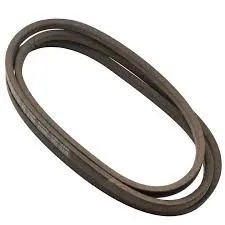- Arabic
- French
- Russian
- Spanish
- Portuguese
- Turkish
- Armenian
- English
- Albanian
- Amharic
- Azerbaijani
- Basque
- Belarusian
- Bengali
- Bosnian
- Bulgarian
- Catalan
- Cebuano
- Corsican
- Croatian
- Czech
- Danish
- Dutch
- Afrikaans
- Esperanto
- Estonian
- Finnish
- Frisian
- Galician
- Georgian
- German
- Greek
- Gujarati
- Haitian Creole
- hausa
- hawaiian
- Hebrew
- Hindi
- Miao
- Hungarian
- Icelandic
- igbo
- Indonesian
- irish
- Italian
- Japanese
- Javanese
- Kannada
- kazakh
- Khmer
- Rwandese
- Korean
- Kurdish
- Kyrgyz
- Lao
- Latin
- Latvian
- Lithuanian
- Luxembourgish
- Macedonian
- Malgashi
- Malay
- Malayalam
- Maltese
- Maori
- Marathi
- Mongolian
- Myanmar
- Nepali
- Norwegian
- Norwegian
- Occitan
- Pashto
- Persian
- Polish
- Punjabi
- Romanian
- Samoan
- Scottish Gaelic
- Serbian
- Sesotho
- Shona
- Sindhi
- Sinhala
- Slovak
- Slovenian
- Somali
- Sundanese
- Swahili
- Swedish
- Tagalog
- Tajik
- Tamil
- Tatar
- Telugu
- Thai
- Turkmen
- Ukrainian
- Urdu
- Uighur
- Uzbek
- Vietnamese
- Welsh
- Bantu
- Yiddish
- Yoruba
- Zulu
វិច្ឆិកា . 25, 2024 18:15 Back to list
neoprene timing belt
Understanding Neoprene Timing Belts Benefits and Applications
Timing belts are essential components in various mechanical systems, designed to synchronize the rotation of two or more shafts. Among the different materials used to manufacture timing belts, neoprene stands out for its unique properties and advantages. This article explores the benefits, applications, and considerations related to neoprene timing belts.
What is Neoprene?
Neoprene, also known as polychloroprene, is a synthetic rubber developed in the 1930s. It is renowned for its excellent resilience, flexibility, and durability under various conditions. Neoprene offers exceptional resistance to oils, heat, and weather, making it a preferred choice in the manufacturing of industrial products, including timing belts.
Benefits of Neoprene Timing Belts
1. Durability Neoprene timing belts are designed to withstand wear and tear, thanks to the robust characteristics of neoprene rubber. They can resist fatigue over long operating hours, ensuring consistent performance without the need for frequent replacements. This durability is particularly beneficial in high-precision applications.
2. Resistance to Environmental Factors Neoprene is resistant to various environmental stressors, including temperature extremes, UV radiation, and moisture. This resistance makes neoprene timing belts suitable for both indoor and outdoor applications, where they are exposed to different elements that could degrade other materials.
3. Low Maintenance One of the significant advantages of neoprene timing belts is their low maintenance requirement. They do not require lubrication like traditional metal chain or belt systems, reducing maintenance costs and downtime. This feature makes them ideal for automation and continuous operation environments.
4. Reduced Noise Levels Neoprene timing belts operate quietly compared to metal alternatives, making them ideal for applications where noise reduction is crucial. Industries such as healthcare, food processing, and office automation benefit from this feature, leading to a more pleasant working environment.
5. Flexibility and Efficiency Neoprene timing belts exhibit excellent flexibility, allowing them to navigate around pulleys and gears efficiently. Additionally, they provide efficient power transmission, minimizing energy loss and enhancing the overall performance of the machinery.
neoprene timing belt

Applications of Neoprene Timing Belts
Neoprene timing belts are widely used across various industries due to their reliable performance and versatility
. Some common applications include- Automotive Industry In vehicles, neoprene timing belts are often employed in engine systems to synchronize the crankshaft and camshaft, ensuring proper engine timing for efficient operation. They help improve fuel efficiency and reduce emissions.
- Industrial Machinery Neoprene timing belts are utilized in conveyor systems, packaging machinery, and robotic applications. Their reliability and low maintenance requirements make them suitable for high-speed operations and complex mechanical systems.
- Consumer Electronics Many consumer electronics, such as printers and computer peripherals, utilize neoprene timing belts for smooth and precise motion control. Their ability to minimize noise and vibration is particularly advantageous in these applications.
- Textile and Woodworking Machines In manufacturing processes, neoprene timing belts ensure precise operation in machines used for cutting, sewing, and assembling materials. Their durability and resistance to wear make them ideal for these demanding environments.
Considerations
While neoprene timing belts offer numerous advantages, it is essential to consider specific operational requirements, such as load capacity and environmental conditions. Proper selection and maintenance will ensure optimal performance and longevity of the timing belts.
Conclusion
Neoprene timing belts are a crucial component in modern mechanical systems, providing a combination of durability, flexibility, and low maintenance. Their wide range of applications across various industries demonstrates their importance in ensuring efficient and reliable machine operation. As technology continues to advance, the role of neoprene timing belts is expected to expand, further contributing to innovations in engineering and manufacturing.
-
Korean Auto Parts Timing Belt 24312-37500 For Hyundai/Kia
NewsMar.07,2025
-
7PK2300 90916-T2024 RIBBED BELT POLY V BELT PK BELT
NewsMar.07,2025
-
Chinese Auto Belt Factory 310-2M-22 For BMW/Mercedes-Benz
NewsMar.07,2025
-
Chinese Auto Belt Factory 310-2M-22 For BMW/Mercedes-Benz
NewsMar.07,2025
-
90916-02660 PK Belt 6PK1680 For Toyota
NewsMar.07,2025
-
drive belt serpentine belt
NewsMar.07,2025

